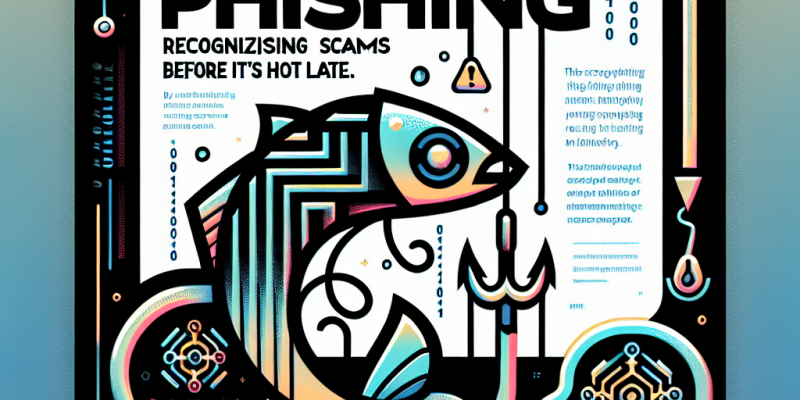Demystifying Phishing: Recognizing Scams Before It’s Too Late

In today’s digitally-driven world, phishing scams have become a pervasive threat, compromising personal information, financial security, and even organizational integrity. Despite growing awareness of cyber threats, phishing remains one of the most effective tactics employed by cybercriminals. This article aims to demystify phishing, highlight its nuances, and provide essential strategies for recognizing and preventing these scams before it’s too late.
What is Phishing?
Phishing is a form of cyberattack where attackers impersonate legitimate organizations or individuals to trick users into revealing sensitive information. This can include passwords, credit card numbers, Social Security numbers, and other personally identifiable information (PII). Phishing attacks often occur via email, but they can also unfold through text messages (smishing), social media platforms, or even phone calls (vishing).
Types of Phishing Attacks
-
Email Phishing: The most common type, where attackers send emails that appear to be from well-known institutions (like banks, online retailers, or social media platforms) with malicious links or attachments.
-
Spear Phishing: A targeted attempt where attackers customize their messages to specific individuals or organizations, often using personal information obtained from social media or previous breaches to make their offerings more convincing.
-
Whaling: A highly targeted attack aimed at high-profile individuals, such as executives or senior officials within an organization, often involving more sophisticated manipulation tactics.
-
Clone Phishing: Attackers create an identical replica of a previously sent legitimate email, replacing it with a malicious link or attachment. This is often targeted at individuals who have already engaged with the original email.
- Pharming: Rather than relying on human interaction, pharming redirects users from legitimate websites to fraudulent ones, often by exploiting vulnerabilities in DNS servers.
Recognizing Phishing Attempts
Phishing scams are becoming increasingly sophisticated, making them harder to identify. However, certain signs can help individuals recognize potential phishing attempts:
-
Suspicious Sender Information: Verify the sender’s email address. Phishing emails often come from addresses that closely resemble legitimate websites but may have slight misspellings or unusual domains.
-
Generic Greetings: Be wary of emails that use generic greetings like "Dear Customer." Legitimate companies often use personalized salutations.
-
Urgent Language: Many phishing attempts create a sense of urgency, urging recipients to act immediately to avoid negative consequences, such as account suspension or loss of access.
-
Poor Grammar and Spelling: Though some phishing scams appear highly polished, many still contain noticeable grammatical errors or awkward phrasing.
-
Questionable Links: Hover over any hyperlinks to view the destination URL before clicking. If it doesn’t match the claimed source or looks suspicious, don’t click.
-
Requests for Sensitive Information: Legitimate organizations rarely ask for sensitive information via email. If in doubt, contact the organization directly through official channels.
- Attachments: Be cautious of unexpected email attachments, especially from unknown senders, as they may contain malware.
Prevention Strategies
Recognizing phishing attempts is just the first line of defense. Implementing effective prevention strategies can significantly reduce the risk of falling victim to these scams.
-
Educate Yourself and Others: Awareness is crucial. Regular training sessions for employees within organizations can help them identify and respond to phishing attempts.
-
Use Multi-Factor Authentication: Enabling MFA adds an extra layer of security, making it harder for cybercriminals to access your accounts even if they obtain your password.
-
Regularly Update Software: Keep your systems, browsers, and antivirus software updated to protect against known vulnerabilities exploited by attackers.
-
Use Spam Filters: Employ email filters to limit the number of phishing emails that reach your inbox.
-
Verify Requests Independently: If you receive a request for sensitive information, verify it through an independent channel before responding.
- Report Phishing Attempts: If you encounter a phishing email, report it to your email provider or organization’s IT department. This can help combat the spread of these scams.
Conclusion
As digital landscapes continue to evolve, so too do the tactics employed by cybercriminals. Understanding and recognizing phishing scams is essential in safeguarding personal and organizational data. By staying informed and implementing preventive measures, individuals can significantly reduce the risk of falling victim to these deceptive tactics. Remember, the most effective defense against phishing is a well-informed individual—keep your guard up, and recognize that in the realm of cybersecurity, vigilance is your strongest ally.














